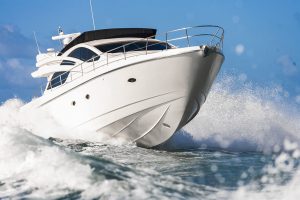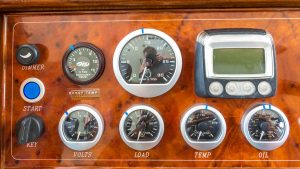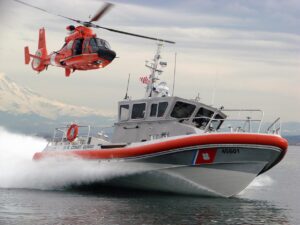
Modern marine engines have come a long way from the sputtering, oil-dripping beasts of earlier times. Electrical systems with smart chargers, inverters and advanced sealed batteries are light years ahead of the leaky blocks of energy that used to start our engines and power our coffee makers.
But despite this improvement, items still wear, and parts break down. The challenge for the vigilant boater is to monitor the boat’s systems in a measurable way, so you know when something is wrong before you’re stuck tied to the pier on a beautiful weekend morning or calling a tow vessel for assistance.
Establish a Baseline
You can’t know when it’s running wrong if you don’t know when it’s running right. That means establishing a baseline against which you can compare on-going performance. Your boat’s instrument panel is the first place to look for baselines and engine trouble.
Analog gauges (or a representation of digital analog gauges) are better at showing trouble than a numerical value digitally displayed on a screen. With a quick glance, it is easier to see a needle on a gauge is in a different position than it is to recognize a numerical value has changed. On my instruments, I cut and applied a thin piece of blue tape at the position where the gauge needles should be at our normal cruise RPM. This allows you to know quickly whether everything is running right.
It’s easy to determine what “right” is when a boat is new, but the same can be determined with your existing boat. When establishing baselines on a used boat, make sure the bottom and running gear are clean, impellers are new or in good condition, the engine has fresh oil and coolant, and the heat exchangers are clean and free of restrictions or growth.

In addition to knowing the engine data at your normal cruise speed, it’s equally important to know that information at idle and wide-open throttle. Record as much information as your instruments give you, beginning with RPM and speed at that RPM. Most factory instrumentation provides basic information such as oil pressure, coolant temperature and battery voltage. Modern electronic diesel engines’ instrumentation provides additional important data such as engine load, boost pressure and fuel burn rate. Consult your engine manufacturer for the specific data important to your engine.
Next, create a spreadsheet listing engine data in three increments: idle, cruise and wide-open throttle. Every couple of outings, run your boat at each of the RPMs on your spreadsheet. Compare the values on your instruments against your previously recorded data. Variances could tell you something as simple as needing the bottom cleaned or a more serious issue such as reduced coolant water flowing through the heat exchanger.
Add Instrumentation
Bringing additional engine data to the helm can assist in monitoring engine and transmission health. Items to check: engine and transmission gear oil temperatures, and for diesel engines, exhaust gas temperature. Second to oil pressure, exhaust gas temperature on a diesel engine is one of the most important items to monitor. It can be a lone leading indicator of problems before they show up in any other ways and most importantly before additional damage is done to the engine.
Take Its Temperature
You know you’re sick when you run a high temperature. Many of the components on your boat are the same. Knowing the normal operating temperature of items helps you monitor their performance. Alternators, hydraulic systems, transmissions, battery chargers and pumps are just a few items whose temperature can be monitored with an infrared (IR) temperature gun. These are inexpensive and readily available. One is so important to the operation of our boat that I keep a spare in the toolbox.
Perform an Engine Room Pre-Check

Performing engine room checks while underway is about finding problems before they cause serious damage or leave you adrift. Regular checks helped us find a valve stuck open on a hydraulic pump and a failed voltage regulator that was over-charging a battery — all discovered with the IR temperature gun. I have a list of items to monitor in the engine room. I do the first check within the first hour after getting underway, then every few hours depending on the duration of the trip.
Always make sure you use safe engine room practices, such as wearing hearing protection and removing loose clothing or jewelry before assessing an engine while underway. To be accurate, the IR gun needs to be as close as safely possible to the item you’re measuring.
The Lifeblood
Fluids are the lifeblood of your engine and transmission, and having a blood test is critical to knowing your equipment’s condition. Having your engine, gear oil and coolant analyzed is an important part of establishing the baseline. An inexpensive analysis at each fluid change can reveal changes in parts wearing or internal components out of specification.
Stuff happens, but establishing baselines and regularly monitoring performance against those values can keep that stuff in the category of maintenance instead of emergency repairs.





